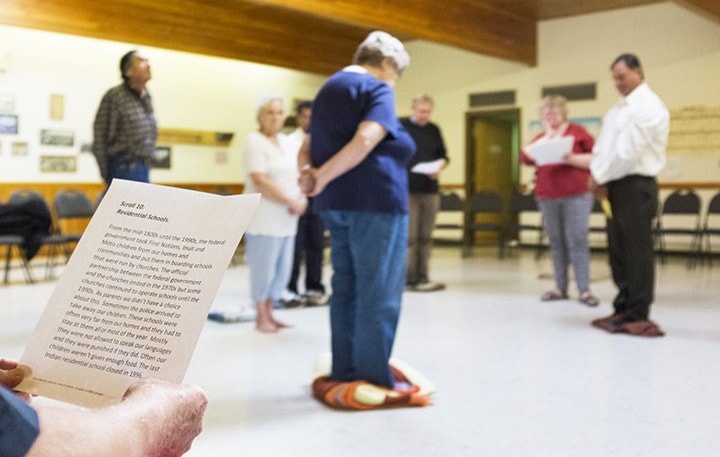The history between Indigenous and non-Indigenous people in Canada was highlighted during a Blanket Exercise created by KAIROS Canada.
Held Sept. 10 at St. Mary’s Anglican Church, attendees were given a better understanding of the deep cultural changes to First Nations cultures across the country since pre-contact with European colonizers, treaty-making, colonization and resistance.
Participants took on the role of Canada’s Indigenous peoples standing on blankets that represent the land. Guiding them through the exercise was Fiona Brownlee, Aboriginal and rural churches liaison with the Anglican diocese. She said the program was developed in the 1990s in response to a Royal Commission on Aboriginal Peoples.
“It talks a lot about the treaties that happened and how the treaties have not been honoured in the way that they should have been,” said Brownlee.
Add to that the exercise highlights the effect of the Indian residential schools on First Nations’ culture and communities. “The need now is to develop better relationships between our communities.”
Treaties education is one recommendation that came out of the recently concluded Truth and Reconciliation Commission with Alberta being one of the first provinces to integrate that learning, added Brownlee. This will further help the goal of the Blanket Exercise.
The first portion of the exercise goes through the steps of first contact up until the present time. After a short break participants regrouped and in a safe and confidential manner, discussed their thoughts.
“The exercise itself, especially if there’s Indigenous participants like we had today, can bring up a lot of feelings and we need to keep that a safe space,” said Brownlee.
One thing that has stood out for Brownlee is the willingness of churches wanting to know more about First Nations history in Canada and to be better neighbours to Indigenous communities.
“And the fact that I am meeting so many strong, Indigenous leaders who also want to move forward on reconciliation,” she explained.
